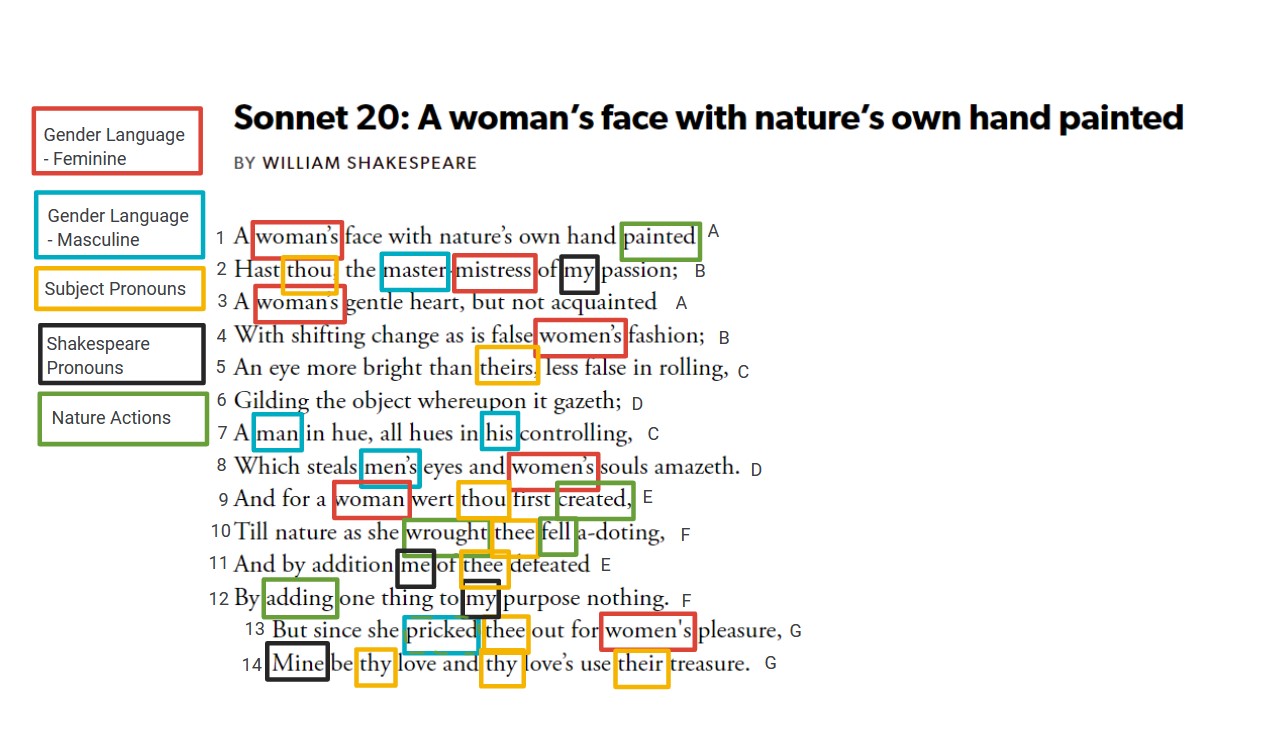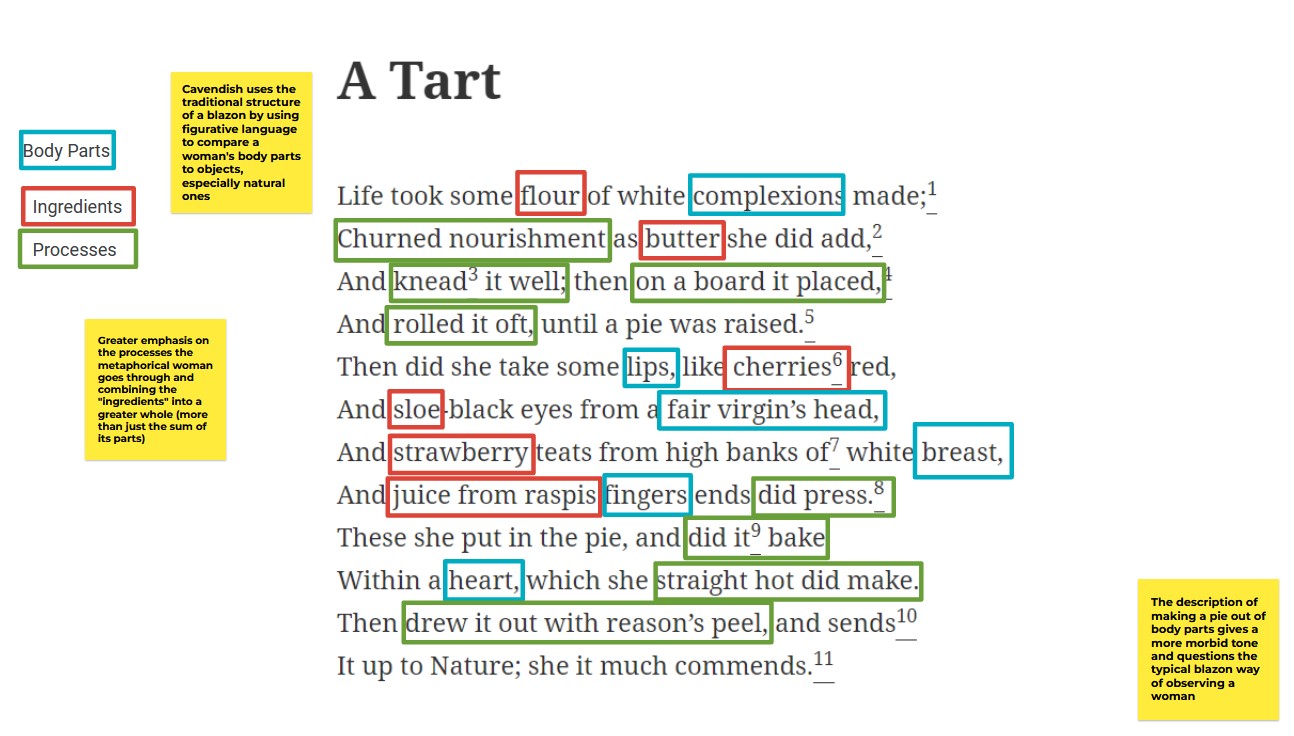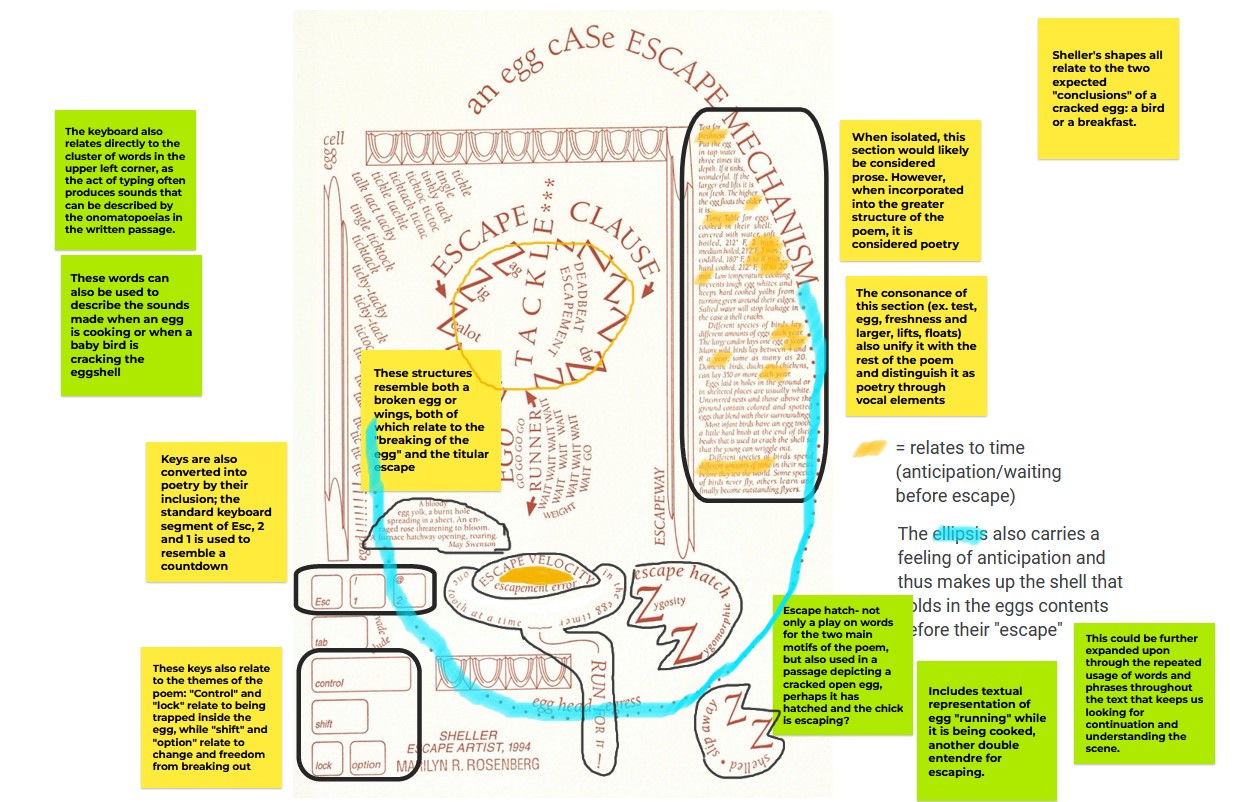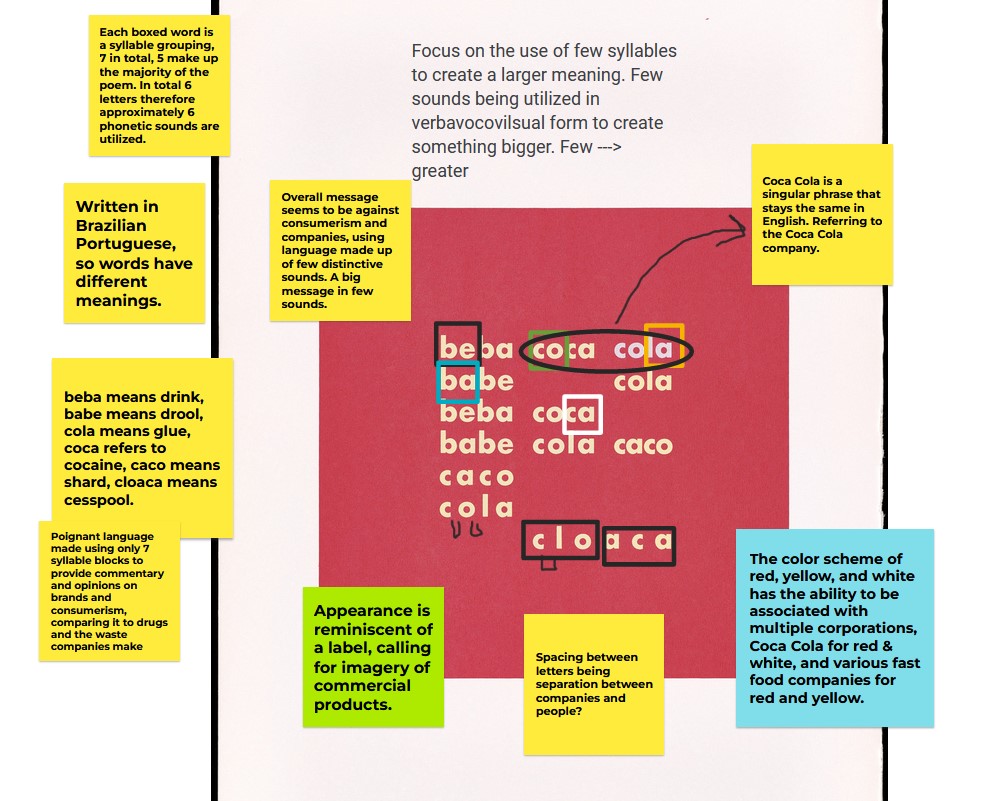William DeTorres, Blake Donley, Reese Sanders, Jacob Swihart
Group Two: Form
Central Question: How do poems encode meaning through unexpected uses of form?
Sonnet 20 by William Shakespeare
Shakespeare's Sonnet 20 adheres to a traditional love sonnet structure: 14 lines, an ABABCDCDEFEFGG rhyme scheme, and an emphasis on physical characteristics and feelings of a subject. However, when delving further into the characters through the usage of pronouns and actions, the true meaning and intention of the poem is shown. Though the subject may appear to be a woman due to feminine descriptions and comparisons, it is revealed through closer examination and a clever double entendre that this is false. As shown in the section from line 9 onward, Shakespeare hypothesizes that though the subject may have originally been created by Mother Nature as a woman, they were so beautiful that she made them into a man so that she could be with them.

A Tart by Margaret Cavendish
Cavendish uses the traditional structure of a blazon by using figurative language to compare a woman's body parts to objects, especially natural ones, within the structure of a sonnet. However, the way she describes the creation of the metaphorical "pie" subverts this structure through both it's tone and the parts it chooses to describe. Cavendish puts much greater emphasis on processes than a typical blazon and shows how the ingredients are combined and transformed throughout the baking. This conveys the idea that the "pie" represents how a woman is shaped throughout her life into something greater than just her "ingredients". The way the body parts are described as being baked into the pie also results in a more morbid tone and brings into question how a typical blazon observes women.

Sheller Escape Artist by Marilyn Rosenberg
Rosenberg constructs "Escape Hatch" out of many unexpected parts. The poem includes prose, keyboard keys and words formed into egg-related shapes. However, these strange structures all relate to the central themes of the poem, whether it's the wait for the "egg" to "break" for the escape to happen, the escape itself or the release into the world or into the pan that follows.

Beba Coca Cola by Décio Pignatari
"Beba Coca Cola" is a rather minimalistic poem written by Pignatari. Despite the minimalism, it makes grand use of the verbivocovisual form to convey its message. Despite the use of few syllable blocks, powerful words are able to be formed making words that point towards a central idea and meaning. It takes advantage of harsh sounds and designs and colors familiar to many companies to draw to an anticonsumeristic theme that can be distinguished in multiple languages.
